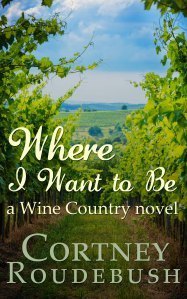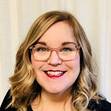Amy Sue Nathan's Blog: Women's Fiction Writers, page 32
March 26, 2014
Tough Love And A Vintage Vibe From Debut Novelist Susan Gloss
 When I heard about VINTAGE by Susan Gloss, I couldn’t wait to get my hands on it! A thrift shop, clothes, accessories, jewelery, and friendships? In women’s fiction. This isn’t your high heels chick lit novel, folks, not that there’s anything wrong with those. This book showcases a cross-section of the female population and is a layered tale of friendship, written with some special touches (like the vintage clothes).
When I heard about VINTAGE by Susan Gloss, I couldn’t wait to get my hands on it! A thrift shop, clothes, accessories, jewelery, and friendships? In women’s fiction. This isn’t your high heels chick lit novel, folks, not that there’s anything wrong with those. This book showcases a cross-section of the female population and is a layered tale of friendship, written with some special touches (like the vintage clothes).
VINTAGE debuted this week, and Susan was kind enough to answer my interview questions last minute, because GUESS WHO was a little behind on her blog interviews (for shame).
Please welcome debut novelist Susan Gloss to Women’s Fiction Writers!
Amy xo
Tough Love And A Vintage Vibe From Debut Novelist Susan Gloss
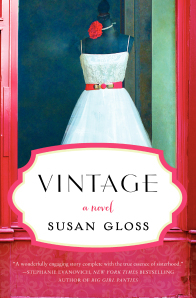 Amy: VINTAGE is set in a thrift store in Madison, Wisconsin. What sparked the idea for the novel? A person, a place, or a thing?
Amy: VINTAGE is set in a thrift store in Madison, Wisconsin. What sparked the idea for the novel? A person, a place, or a thing?
Susan: I have a few favorite thrift stores in my hometown of Madison, Wisconsin. The idea for the novel came to me over the course of many afternoons spent wandering their aisles.
Amy: What was your favorite item to research and write about?
Susan: There’s a Dior evening gown with matching gloves that shows up in one of the scenes where Violet and April, two of the main characters, are picking out outfits for models to wear in a fashion show fundraiser. The gown in the book was inspired by a real vintage item I saw on Etsy, but couldn’t afford. And, even if I could, I’d have no place to wear it! So instead I researched the types of dresses Dior was making at that time and came up with a fictional one I could enclose in the pages of Vintage instead of in my own closet.
Amy: Can you share with us a little of your journey to publication?
Susan: VINTAGE is actually the second book I queried. I queried a different manuscript before VINTAGE that I eventually shelved because it didn’t garner any offers of representation. Even with VINTAGE, I racked up quite a few rejections and some R&Rs (revise & resubmits) that didn’t end in offers. At one point, around the time my son was born, I took a break from querying. Between feedings and sleepness nights, I kept hammering away at revisions to VINTAGE, based on the feedback I’d gotten. When I came back to querying a few months later, I knew the manuscript was ready because I got a lot more requests for the full manuscript and, eventually, a few offers to choose from. Once I signed with my agent, the book sold pretty quickly. But the road to getting to that point was a long one.
Amy: What does the term Women’s Fiction mean to you–and does the label bother you?
Susan: The label doesn’t bother me as applied to my own work. I know that my target readers are mostly women and, thus, I feel like it’s just honest marketing. It does bother me, though, when literary novels are stamped with the label just because they are written by a woman. I do feel that, in the field of literary fiction (which I read a lot of), books by women are discussed and marketed differently than books by men, and the difference isn’t always a positive one.
Amy: What’s your best advice for aspiring authors of women’s fiction?
Susan: I’m gonna go all “tough love” for a minute here. Here’s my advice: do NOT let rejection win. If you allow rejection to push you toward giving up, then you’re not cut out for the game of writing and publishing. There will be ego bruises and rejections at every stage of the writing and publication game. Your critique partner doesn’t love one of your characters. An agent or ten or fifty rejected your query. An editor passed on your submission. A reviewer bashed your novel. Your editor or agent liked your first book, but didn’t like the next. See the pattern here? The writers whose books end up on the shelves are the ones crazy enough to keep going.
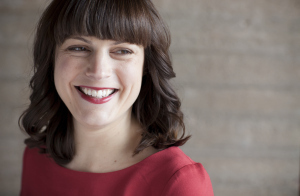 Susan Gloss is a graduate of the University of Notre Dame and the University of Wisconsin Law School. When she’s not writing fiction, Susan can be found working as an attorney, blogging at GlossingOverIt.com, or hunting for vintage treasures for her Etsy shop, Cleverly Curated. She lives with her family in Madison, Wisconsin.
Susan Gloss is a graduate of the University of Notre Dame and the University of Wisconsin Law School. When she’s not writing fiction, Susan can be found working as an attorney, blogging at GlossingOverIt.com, or hunting for vintage treasures for her Etsy shop, Cleverly Curated. She lives with her family in Madison, Wisconsin.
Twitter: http://twitter.com/susangloss
FB: http://facebook.com/authorsusangloss
Pinterest: http://pinterest.com/glossingoverit
Website: http://susangloss.com
Blog: http://glossingoverit.com


March 24, 2014
Fill Your Cup With Inspiration and A Story From Author Brenda Bevan Remmes
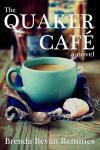 Hold onto your keyboards, my friends! Just when you thought you knew about all the twists and turns of publishing, meet Brenda Bevan Remmes and prepare to be inspired by the talent and tenacity!
Hold onto your keyboards, my friends! Just when you thought you knew about all the twists and turns of publishing, meet Brenda Bevan Remmes and prepare to be inspired by the talent and tenacity!
Today is the official launch of Brenda’s novel, THE QUAKER CAFE. Congratulation her, and share your own stories, in the comment section!
Amy xo
Fill Your Cup With Inspiration and A Story From Author Brenda Bevan Remmes
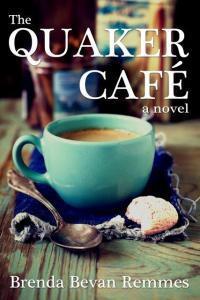 Amy: Welcome to WFW, Brenda! This has been a long time coming. Tell us all what sparked the idea for THE QUAKER CAFE.
Amy: Welcome to WFW, Brenda! This has been a long time coming. Tell us all what sparked the idea for THE QUAKER CAFE.
Brenda: I’ve always figured you’re either a “small town” person or a “city” person. I’ve lived most of my life in small towns and love them. Everyone knows everyone. Gossip is the bread and butter of any exchange and it doesn’t take place on line. It happens daily in the local gathering spots: the restaurant, garage, post-office or an occasional antique shop where people gather in twos and fours to catch up. I’ve heard so many great stories. I started out by writing some of them down. The Quaker Café started out as short stories under the same title, however, as I began to attend conferences and have editors and agents review my work, I was hearing the same thing over and over again. They wanted a novel… a novel with tension, a lot more tension. The humor was entertaining, they told me, but there had to be a strong plot, you know, that ARC, in order to sell the book.
Amy: Your publishing journey – like so many – wasn’t what you expected it to be. I think that it’s filled with hope and determination. Can you share a little of what happened with you and THE QUAKER CAFE and how you came to be where you are now?
Brenda: I hit the jackpot right at the beginning…a writer’s fantasy. After spending three years writing and revising with a lot of help from other writers (by all means, find a good critique group), the first agent I contacted signed me and then sold my book within one week. I got a nice big contract and my first check. I was in heaven…had obviously been “discovered” and was on my way to greatness. Two years later, my manuscript still sat on a desk with nothing happening. I have a wonderful agent who pushed and pushed, but the sands were shifting under my feet as e-books bolted climbed in the market and cut profits. The recession hit. Publishing companies were rethinking fat contracts for debut novelists. They decided to cut their losses and drop me. It was a painful period…to be on the top one year and back on the bottom another. I cannot begin to tell you how supportive my agent and writing friends were. They reminded me that my initial turnaround on a book deal was highly unusual and now I’d begin to experience the real challenges of publication. I still had my agent and she went to the carpet for me. I was able to keep my initial advance and reclaim all rights to my book,(the importance of a tight contract) but afterwards only rejections poured in from other publishers. Last August, my agent suggested that I let her company publish my book in e-book format. Here’s what’s different about this: originally agent companies acted only as the negotiator. They made the deals between the writer and the publisher. Now, with e-book and no need to go through the print, distribution and warehouse costs and headaches, some agent companies have become annoyed at the limited access to the big five publishers and are simply by-passing them. They’re experimenting with setting-up their client’s manuscripts on e-book and helping with the marketing. Of course, in this day and age, any writer can publish their own book on create.space. What my agent adds to that is a one year exclusive with Amazon and a paperback, accompanied by their marketing contacts. The marketing is really the thing. How is all comes out…we’ll see.
Amy: Without any spoilers, what was your favorite scene to write in the novel? And was it an easy scene to write, or a difficult one?
Brenda: The Quaker Café is a story set in 1992. Chapter eight in my book is a funeral scene where a prominent white politician has requested a black minister and his choir for his funeral service in his previously segregated home church. I wrote about the conflict and consternation this creates in the community but then only made reference to the actual event in passing My critique group called me on it. They insisted I had to write the scene. I didn’t think I could make justice of it. I didn’t want to offend any race or make light of the sanctity of such a service. I have had the privilege to attend quite a few black funeral services and I have always appreciated the full participation of the congregations in contrast to the more subdued services in white Protestant churches. My heart wasn’t in it, but I sat down and tried to get the words on paper. I started to imagine bits and pieces I’d seen in other services and then I pushed the envelope a bit. Before long I was on a roll. It started just pouring out. Ultimately, it got too long and I had to start cutting, but I had a lot of fun with it. Many people have told me it is one of their favorite chapters.
Amy: There’s a lot of scuttlebutt online about the term women’s fiction. Does it bother you? Or better yet? What does that term evoke for you?
Brenda: You know, it doesn’t bother me. Since my book isn’t going to be shelved in a bookstore under “Women’s Fiction,” and isn’t classified as such on line, I haven’t really thought about it. When I’ve done a pitch, I’ve told editors and agents that it’s women’s fiction, because I personally believe it will have more appeal to women than men, but at the same time quite a few men have read my book and told me they liked it. I’m more concerned that since it has the word “Quaker” in the title that people will think it’s a book just about Quakers, or a book about religion. It’s none of that and all of that: Quakers, Methodists, Baptists, women, men, friendship, family, hardship and past transgressions that resurface to inflict the innocent.
Amy: What’s your best advice for aspiring authors?
Brenda: A couple of points have stuck with me that I’ve heard from agents and editors. The first was “Dig Deeper.” If your writing hasn’t yet made you laugh, cry, shiver in fear or cringe with pain, then you’re not there yet. Or as Robert Frost is so frequently quoted “No tears in the writer, no tears in the reader.” I’m not there yet with my second novel. Nothing has made me cry and I haven’t heard anyone who’s read parts laugh out loud. It’s still a work in progress.
My second word of advice is standard stuff: Write rewrite and rewrite some more. Find good readers and listen. Even after publication, I see a chapter I’d like to go back and redo. It never ends.
I have quote from Thomas Edison stuck to the corner of my computer. It reads: “Our greatest weakness lies in giving up. The most certain way to succeed is always to try just one more time.” That’s my mantra.
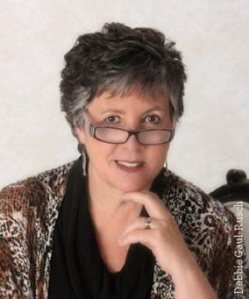 Brenda Remmes lives near the Black River Swamp in South Carolina in an old family home filled with the history of generations past. Her stories and articles have appeared in Newsweek, The Petigru Review, The Southern Sampler, and academic journals. She spent her career conducting rural health programs for the Schools of Medicine at both The University of North Carolina and The University of South Carolina. Her debut novel, The Quaker Café, was published in March of 2014 by Inkwell Publishing out of New York. She is working on a sequel.
Brenda Remmes lives near the Black River Swamp in South Carolina in an old family home filled with the history of generations past. Her stories and articles have appeared in Newsweek, The Petigru Review, The Southern Sampler, and academic journals. She spent her career conducting rural health programs for the Schools of Medicine at both The University of North Carolina and The University of South Carolina. Her debut novel, The Quaker Café, was published in March of 2014 by Inkwell Publishing out of New York. She is working on a sequel.
Find out more about Brenda on her website: http://brendaremmes.com/
Buy THE QUAKER CAFE by clicking HERE.


March 19, 2014
Guest Post: One Writer’s Plan To Write A Novel Before She Turned Thirty
What’s your writing story? I was always a writer, but frankly, I didn’t think I’d ever write a novel. It just wasn’t on my to-do list. And when I was looking at thirty I was looking at a two-year-old, a golden-retriever, and a cross-country move—NOT at a typewriter. When I was turning thirty, we did not own a computer, almost no one did. OY!
But, Cortney Roudebush had a plan and she followed through and finished writing a novel before her thirtieth birthday! (Which I’m guessing wasn’t that long ago.)
Remember: finishing a novel is an accomplishment. Caught up in the drive to publish we forget that. But I do remember the first time I typed THE END on the first draft of what would become The Glass Wives. That book was pronoun-challenged, cliche-filled, and lord only knows what else. But, it was FINISHED.
Read about Cortney’s journey, and welcome her to Women’s Fiction Writers!
Amy xo
My Plan To Write A Novel Before I Turned Thirty
by Cortney Roudebush
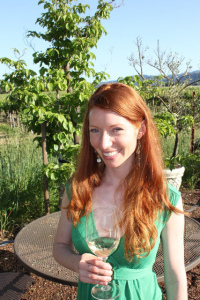 When I was about twelve, I made a pact with myself to publish my first novel before I turned thirty.
When I was about twelve, I made a pact with myself to publish my first novel before I turned thirty.
In high school and in college, I wrote short stories and nonfiction articles for the school newspaper. After graduating with a degree in Creative Writing, I did some professional writing and I began a wine blog. Despite having said writing experience, I didn’t know the first thing about crafting a novel. There was no novel-writing class offered at USC.
As my thirtieth birthday loomed closer, I started writing like a madwoman. My impatience and eagerness to publish put me at a disadvantage. I realize now how many mistakes I made. But it has been a learning experience to say the least.
• Have a plan
I’ve never been much of a planner, professionally or personally. I say it’s because I like to live in the moment and be spontaneous, but I am also afraid of commitment. For years, I toyed with different ideas for my first novel, but none of them seemed good enough. My worst fear was committing to one of those mediocre ideas and writing fifty pages but never complete it.
One day in early 2012, I sat down and typed up a few funny stories. These vignettes became longer until I started to string them together. Before I knew it, these pages became the first draft of my debut novel, Where I Want to Be. I wrote several drafts after that, hoping to get it right but not sure if I was even going in the right direction.
Before delving into the writing part, I should have planned out the plot and major events (at least to some extent). And if I had developed my characters first, I would have saved myself a lot of time with fewer drafts.
Knowing who and what you are writing about is like providing yourself a roadmap (or using Google Maps on your iPhone). Without any kind of guidance, it’s very easy to get lost.
• Know your characters
You don’t have a story if you don’t have believable characters. In my first few drafts of Where I Want to Be, the characters were one-dimensional and I realized I didn’t like them that much. There weren’t people that I wanted to hang out with, let alone read or write about. I almost gave up on the novel altogether for this reason.
After changing the name of my protagonist about ten times, I forced myself to stop working on the story and get to know my main characters. I decided what they liked to eat for breakfast, what color nail polish they wore, if they had had braces when they were children, what kind of cars they drove, what kind of wine they liked to drink. If I had developed my characters before diving into the novel-writing part, my first book could have been published long before my thirtieth birthday!
• Ask for help
Don’t be afraid to ask for help. I let my stubbornness and impatience keep me from doing a full second edit of my final draft. I was eager to self-publish on Amazon and as a fiercely independent woman, I didn’t want to bother anyone with my manuscript. But it wasn’t perfect and I kept finding typos. Publishing a novel is not something you can—or should—do by yourself. Not all of your friends and family may be available when you need them, but if you don’t ask, you’ll never know much they can help you.
• Be patient
Last but not least, be patient with yourself as well as the writing and publishing processes. Nothing happens overnight, especially the writing part. I am my best cheerleader and my worst antagonist, but I have come to accept that I can’t write all the time. If you are stressed out and pushing yourself too hard, your writing will suffer.
When you allow yourself the time to write and balance that effort with other non-writing activities (like exercise and spending time with friends), it will be more enjoyable. I really enjoy the writing process; if only I felt the same way about planning…
Cortney Roudebush grew up in Sausalito, California with her parents and younger sister. As a child, she was an avid reader and always knew she wanted to be a writer.
After graduating with a degree in Creative Writing from the University of Southern California, Cortney moved to San Francisco. One of her early jobs was an advertising position at Wine Spectator Magazine. She already had an interest in wine, which only continued to develop.
In 2009, Cortney Roudebush’s passion for wine encouraged her to move to Napa Valley. After working in the restaurant industry and passing the Court of Master Sommeliers preliminary exam, she relocated from San Francisco to St. Helena. She began a wine blog called Sip, Swirl, Savor and wrote about her wine tasting experiences. She also held hospitality positions at various wineries. Inspired by her Wine Country experiences, she started her first novel in 2012. WHERE I WANT TO BE is the first of four novels in the Wine Country Series about four friends who live and work in Napa Valley. Cortney currently lives in Marin County and still enjoys going wine tasting in her free time.
Like my Facebook page: facebook.com/AuthorCortney
Follow me on Twitter: twitter.com/AuthorCortney


March 16, 2014
Five Reasons You Should Enter The Women’s Fiction Writers Contest (Finally!)
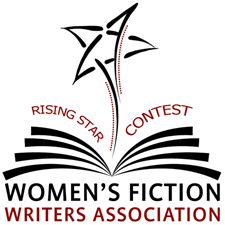 Oh. Em. Gee. It’s about time. The Women’s Fiction Writers Association (linky love below) is holding its first contest for authors not yet published in women’s fiction. That’s right, if you’re not published at all, or if you’re published in another genre or non-fiction, YOU are eligible to enter. And I’ll tell you why I think it’s so cool, and why you should enter.
Oh. Em. Gee. It’s about time. The Women’s Fiction Writers Association (linky love below) is holding its first contest for authors not yet published in women’s fiction. That’s right, if you’re not published at all, or if you’re published in another genre or non-fiction, YOU are eligible to enter. And I’ll tell you why I think it’s so cool, and why you should enter.
Reason #1: This is really a contest for women’s fiction, not for romance that borders on women’s fiction. Not for women’s fiction, but-really-for- romance-but-we-think-we-need-to-say-it’s-women’s-fiction. This is a contest that embraces all the nuances of women’s fiction, all the elements that are possible and all the elements that are present in today’s published women’s fiction.
Reason #2: As if #1 wasn’t enough, the final judges for this contest are acquiring agents of women’s fiction. Truly! If your manuscript is one of the finalists, it’ll end up before folks who could, possibly maybe you-just-never-know, offer to represent your work. And by represent your work, I mean, SELL IT TO A PUBLISHER.
Reason #3: The first-round judges are authors who are published in women’s fiction. You know, that genre you want to your book published within, that posse you want to be part of? Yeah, them. Those. Us.
Reason #4: You’ll be in on the ground floor of a fabulous organization. I am a member of WFWA, just finished an amazing Don Maass workshop with WFWA, poke around on the WFWA forums, and have some good aspiring and published author friends in WFWA. You don’t have to be a member to enter the contest, but I’m not sure why you wouldn’t want to be.
Reason #5: I met my agent through a contest. It does happen. It could happen to you! I was a self-proclaimed contest junkie before I had an agent. I entered excerpts and pitches online, via mail, big and small, free and fee. It doesn’t hurt you to enter the contest, unless of course, your manuscript is not complete and polished. And I mean polished, not just reviewed by you, but by a multitude of readers, and by readers I mean, perhaps freelance editors and others who KNOW about writing, women’s fiction, and the marketplace. There is a limited number of entries accepted, so if you’re not finished, and your book isn’t as ready as it’s going to be, don’t take someone else’s place. Not fair. This fifth reason is key. In the current publishing climate, you must identify, collect, and capitalize on every opportunity to get what you want. This could be your time.
I know it is the time to polish your finished manuscripts, make those final tweaks and revisions. Double-check everything. There’s time. This is your official and friendly HEADS-UP!
Check out the information and links below, and then, go for it! Remember, I did. I met my agent. I revised my novel again. It sold. It was published. I have another novel coming out next year.
And after my years of writing THE GLASS WIVES, the next steps all started with A CONTEST.
Amy xo
The Rising Star Contest is limited to the first 75 entries.
Important Dates:
Contest Opens: May 1, 2014
Entry Deadline: June 27, 2014
Finalists Announced: August 13, 2014
Edited Finalist Entries Due: August 20, 2014
Winners Announced: October 10, 2014
Entry Submission Details
Submit the first thirty-five (35) pages of a completed manuscript (60,000 words or more), plus a 2-3 page synopsis. The synopsis is not judged.
Entry Fee
$30 WFWA Members $35 non-WFWA Members
More info and how to enter:
Link to WFWA:


March 12, 2014
Author Amy Hatvany Just Wants To Keep Doing What She Loves: Writing (And We’re Glad She Does!)
 Yes, I really should start keeping track of how and where I meet authors! I met Amy Hatvany online somewhere at some point in the past five years (how’s that?) and we bonded over sharing a name—that, the fact that she was super supportive and positive before I even signed with an agent or sold my novel really made an impression on me—just like “the other Amy’s” women’s fiction! Today, Amy Hatvany shares with us where she got the idea for her latest novel SAFE WITH ME, how she writes her best-selling novels, and her matter-of-fact (and smart) thoughts on the term women’s fiction.
Yes, I really should start keeping track of how and where I meet authors! I met Amy Hatvany online somewhere at some point in the past five years (how’s that?) and we bonded over sharing a name—that, the fact that she was super supportive and positive before I even signed with an agent or sold my novel really made an impression on me—just like “the other Amy’s” women’s fiction! Today, Amy Hatvany shares with us where she got the idea for her latest novel SAFE WITH ME, how she writes her best-selling novels, and her matter-of-fact (and smart) thoughts on the term women’s fiction.
Please welcome Amy Hatvany back to Women’s Fiction Writers!
Amy xo
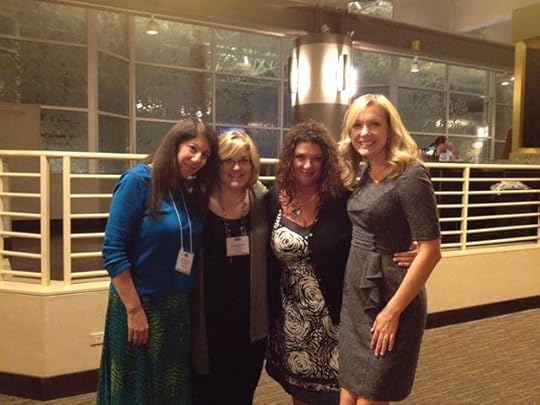
Renee Rosen, Me, Amy Hatvany, Nicole Lynn Baart
Author Amy Hatvany Just Wants To Keep Doing What She Loves: Writing (And We’re Glad She Does!)
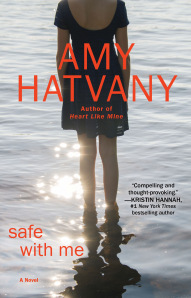 Amy N.:
What sparked the idea for SAFE WITH ME and where were you? And if it didn’t “spark” how did it evolve? (I usually get my best ideas in the shower or when I’m driving.)
Amy N.:
What sparked the idea for SAFE WITH ME and where were you? And if it didn’t “spark” how did it evolve? (I usually get my best ideas in the shower or when I’m driving.)
Amy H.: It actually came from an article I read over a decade ago, about a woman in New York city who was having her home remodeled. She became friendly with one of the workers and as the two of them got to know each other, she shared the fact that her husband was recovering from a kidney transplant. When the worker told her that he had actually donated one of his own kidneys to a stranger the previous year, they compared surgery dates and doctors names and it turned out that the worker was the person who saved the woman’s husband’s life. I still get chills thinking about the two of them coincidentally crossing paths. The story idea grew from there.
Amy N.: Sometimes authors draw on people we know for both major and minor characters in our novels. Is that true for you in SAFE WITH ME and can you share? We won’t tell anyone!
Amy H.: I pulled quite a bit of inspiration for the character, Maddie, from my own teenage daughter, Scarlett. They both have the same kind of spunk and sense of empathy. But Hannah and Olivia definitely arrived in my mind already fully formed.
Amy N.: You’re a seasoned novelist. And yes, that makes me picture someone dousing you with parsley and oregano. Still, it’s the truth. This is not your first rodeo. So, here’s the question without the western cliches or the herbs and spices — how do you write your books? Do you wing it and write until you find the story and the rhythm and the characters or are you methodical with character sketches, outlines, and calendars?
Amy H.: I’m not one to prepare a detailed outline of a book, but trial and error has taught me that before I begin writing, I absolutely must have a compelling overall question I am attempting to answer or I will waste countless hours meandering down plot-paths to nowhere. The question is what drives the plot; it is what propels the protagonist(s) to action in every scene.
Before I begin, it also helps me to sketch out a basic, three-act structure of the story. I identify the turning points at the end of Acts I and II ahead of time so I have pin-pointed destinations for my characters to reach. In SAFE WITH ME, the first turning point is when Olivia and Maddie enter Hannah’s salon and the three characters meet for the first time, only one of them suspecting who the other two might be. That encounter spins the plot onward, it gave Hannah something to do, an action to take–discovering whether or not Maddie was the recipient of Hannah’s daughter’s liver. It created tension–leaving the reader wondering if and when Hannah will reveal who she is or if Olivia will simply find her out. The second turning point my characters needed to reach came at the end of Act II, and propelled the story into its resolution phase, and ultimately, the final scene.
Amy N.: Does the term women’s fiction ruffle your writer or feminist feathers?
Amy H.: Not especially. I’m not a fan of labels in general, but I understand that they are a necessary evil when it comes to marketing and the business side of publishing. And I’m proud to say that I write for the largest book-buying population in our country: women. Yes, the sociology major in me would love to get down and dirty into a conversation about gender role bias and the belittlement of women’s intellectual contribution to society, but the writer in me just wants to keep doing what I love. And that’s writing.
Amy N.: If you could do one thing differently in your writing career up to this point — something that others might learn from — what would that be?
Amy H.: I’m still a work in progress with this particular issue, but today I am much better than I was in the beginning of my career at focusing on the positive. On the readers I reach with my stories, whose lives I affect in some kind of way. I’ve spent too much time fretting over the one star reviews and negative commentary about a book. Also, I’d say that I’ve learned to focus more on enjoying the process of writing, staying in the moment and pulling whatever kind of joy I can from it. I spent the first years of this career in a constant state of deep-seated anxiety about what comes next, if it will come at all. Today, I’m pretty good at appreciating whatever spot in the process I might be experiencing, knowing that the rest will take care of itself, one way or another. Some days I am better at this than others, for sure.
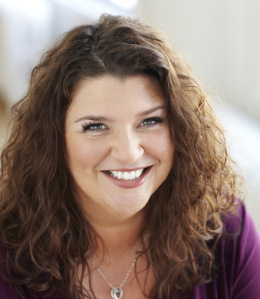 Amy Hatvany graduated with a degree in Sociology only to discover most sociologists are unemployed. Soon followed a variety of jobs – some of which she loved, like decorating wedding cakes; others which she merely tolerated, like receptionist.
Amy Hatvany graduated with a degree in Sociology only to discover most sociologists are unemployed. Soon followed a variety of jobs – some of which she loved, like decorating wedding cakes; others which she merely tolerated, like receptionist.
In 1998, Amy finally decided to sell her car, quit her job, and take a chance on her passion: writing books. Her background in sociology inspires and informs much of her writing as she tackles timely and controversial issues in her novels including mental illness, domestic abuse, and alcoholism. She is the author of BEST KEPT SECRET, OUTSIDE THE LINES (a Target book club pick in 2012 and a Costco Pennie’s Pick in 2013), THE LANGUAGE OF SISTERS, and HEART LIKE MINE. Her latest novel, SAFE WITH ME, was published in March by Washington Square Press/Atria Books.
Amy spends most of her time today with her second and final husband, Stephan. (Seriously, if this one doesn’t work out, she’s done, kaput, no more husbands.) She stays busy with her two children, Scarlett and Miles, and her “bonus child,” Anna. Their blended family also includes two four-legged hairy children, commonly known as Black Lab mutts, Kenda and Dolcé.
When Amy’s not with friends or family, she is most likely reading, cooking, or zoning out on certain reality television shows. Top Chef is a current favorite. She eagerly awaits auditions for the cast of “Top Author.” (“Quick Edit” instead of “Quick Fire” Challenge? C’mon, producers! That’s gripping television!)
Here are great ways to find Amy Hatvany online. Just click!
Twitter ~ Facebook ~ Instagram ~ Goodreads ~ Website


March 11, 2014
A WFW Book Review: Therese Walsh’s THE MOON SISTERS
by Amy Sue Nathan
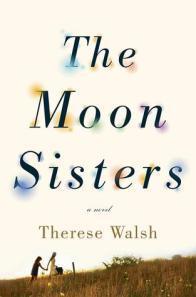 I just returned from a weekend “back home” in Philadelphia celebrating different things with different family members, so it’s apropos that today I’m posting my sort-of review of THE MOON SISTERS by Therese Walsh, her newly released novel about family, leaving home, and going home again.
I just returned from a weekend “back home” in Philadelphia celebrating different things with different family members, so it’s apropos that today I’m posting my sort-of review of THE MOON SISTERS by Therese Walsh, her newly released novel about family, leaving home, and going home again.
My weekend has left me tired, in a good way, and also feeling a little woozy—a little like I’m processing things in a different way today, maybe like Olivia Moon does in THE MOON SISTERS.
Here’s the Goodreads review I wrote when I was lucky-beyond-lucky to read an ARC of THE MOON SISTERS:
In The Moon Sisters, Therese Walsh paints a vivid picture of an emotional and physical journey for two sisters, Olivia and Jazz, who couldn’t be more different but realize in the end that the things that bind them together—their father, the death of their mother, their home, and eventually the desire to move forward—are more important than anything else. The rich details in this book bring to life a part of the country, West Virginia, that I’ve never visited, but believe I would now recognize. The Moon Sisters has evocative yet playful prose, as well as depth, yet it is not bogged down at any point. I couldn’t stop turning the pages. Olivia and Jazz Moon have remained in my thoughts weeks after I finished the book. Actually, I think I may read it again.
All of that is true, and exactly how I feel about the book. One of my favorite things about the book is that playful prose I mention. Therese Walsh is a prose crafter, for sure. The book is accessible, but it’s not simple. I don’t mean it’s hard to read, I mean the writing is truly lovely. And I adore many books where the writing is great, but not necessarily lovely. Does that make any sense? I don’t read books that are difficult to read, and although I struggle when someone says my book is an “easy read” I do know that writing an “easy read” is not easy. When relaying THE MOON SISTERS to others, it means that there is a flow, it kind of takes me along for the journey of Jazz and Olivia and there is no struggle in reading, not at all.
I was still writing my second novel while I was reading and what the author (okay, okay, yes, she’s my friend, I can say that—but I don’t gush unless it’s all true for me about a book) is that by reading THE MOON SISTERS I was encouraged to do two things with my own book: 1) really explore the setting in more detail to make it real for the reader, and 2) experiment with a non-linear addition to my novel (and I do mean experiment, as I am quite the linear gal). I really internalized the way Teri wrote the book and realized that it swept me away to somewhere new and different, in a way I really enjoyed.
Another element of the book that I loved — and that surprised and THRILLED me — was that Olivia Moon has synesthesia. To make a long story short, synesthesia, as noted on a “Neuroscience for Kids” website is this:
Synesthesia is a condition in which one sense (for example, hearing) is simultaneously perceived as if by one or more additional senses such as sight. Another form of synesthesia joins objects such as letters, shapes, numbers or people’s names with a sensory perception such as smell, color or flavor. The word synesthesia comes from two Greek words, syn (together) and aisthesis (perception). Therefore, synesthesia literally means “joined perception.”
You’ll have to read THE MOON SISTERS to really get it, but I will tell you that much to my surprise and subsequent relief, I knew that the fact that I see “a calendar in my head” is actually A THING. It’s a form of synesthesia! So that fact that a calendar exists outside myself (OMG, yes, I am blogging this so everyone who only *thinks* I’m strange will now be utterly sure of it) is not only something that happens to me. It happens with days of the week, months, and years, as if projecting them in front of me. It has been this way as long as I can remember. It has a certain look to it — always the same. Weird, yes. Unique? Not so much. Seems the more people Teri asked about synesthesia, the more people who seemed to have some parts of it. It’s involuntary, so it’s not like making up an acronym to remember your to-do list.
If you don’t experience synesthesia at all, Therese Walsh brings it to life—in living color, so to speak—in THE MOON SISTERS. If you do have it, it’s really fabulous to read it. What else is brought to life in the novel? A sense of adventure, a sisterly bond, grief, and hope for the future. I loved the ending — and when you read the book I’d love to know what you think of the ending. Or if you’ve already read it (no spoilers though) let me know in the comments. THE MOON SISTERS is getting great reviews (even more than just this one of course) and you can find them here: ThereseWalsh.com.
Needless to say (but I’ll do it anyway) I loved THE MOON SISTERS as a reader and a writer. As a friend, I’m so pleased for and proud of my friend.
Here’s a tidbit about Therese, and a photo that captures the essence of the author and her novel:
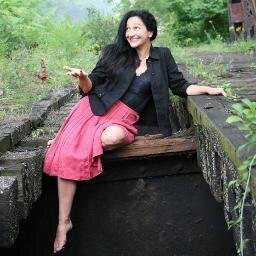 THERESE WALSH is the author of The Last Will of Moira Leahy and the cofounder of Writer Unboxed. She lives in upstate New York with her husband and two children. Follow Therese on Twitter and Facebook.
THERESE WALSH is the author of The Last Will of Moira Leahy and the cofounder of Writer Unboxed. She lives in upstate New York with her husband and two children. Follow Therese on Twitter and Facebook.
March 5, 2014
Author Erika Robuck Reveals The Reasons Behind Writing A Novel About Edna St. Vincent Millay
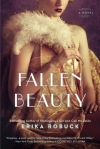 Here we go again, folks! Today we have my friend, Erika Robuck, author of historical fiction featuring strong female protagonists and real historical figures. She’s written about Ernest Hemingway, Zelda Fitzgerald, and now, Edna St. Vincent Millay. What’s fascinating is that Erika’s books don’t feature the “famous person” as the primary main character, but the main characters are strong women in the inner circle. The fictional inner circle! And if the interview isn’t enough to pique your interest in all Erika’s books, below is a book trailer for FALLEN BEAUTY, her latest novel that launched just two days ago (on my son’s birthday, no less)!
Here we go again, folks! Today we have my friend, Erika Robuck, author of historical fiction featuring strong female protagonists and real historical figures. She’s written about Ernest Hemingway, Zelda Fitzgerald, and now, Edna St. Vincent Millay. What’s fascinating is that Erika’s books don’t feature the “famous person” as the primary main character, but the main characters are strong women in the inner circle. The fictional inner circle! And if the interview isn’t enough to pique your interest in all Erika’s books, below is a book trailer for FALLEN BEAUTY, her latest novel that launched just two days ago (on my son’s birthday, no less)!
Erika is a magnificent writer and eloquent speaker. Please welcome back Erika Robuck to WFW!
Amy xo
Author Erika Robuck Reveals The Reasons Behind Writing A Novel About Edna St. Vincent Millay
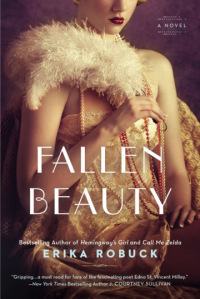 Amy: Welcome back to WFW, Erika! First things first. That cover is to do die for! There’s a lot in the bookish media about book covers. So tell us, what do you think of your Fallen Beauty cover and how did it come to be?
Amy: Welcome back to WFW, Erika! First things first. That cover is to do die for! There’s a lot in the bookish media about book covers. So tell us, what do you think of your Fallen Beauty cover and how did it come to be?
Erika: Thank you, Amy. I recently told my editor at Penguin that I need to take the art department out for dinner since they have created such gorgeous covers for me.
Early in the process, I was asked what I envisioned for the cover, and I sent my publisher vintage photos of Ziegfeld Follies girls. FALLEN BEAUTY begins at the Follies when my protagonist Laura Kelley sneaks away from her father’s house to see the scandalous show. Laura is a seamstress and becomes inspired by the elaborate costumes, which influence her work later in the novel for the poet, Edna St. Vincent Millay.
The art department found this particularly striking and sensuous Follies girl, colored her hair blonde to match my protagonist, and added the rich gold and purple accents to the black and white photograph. I rewrote my opening scene so that Laura is wearing a gold dress with a matching feathered headpiece, to unite the work and the art.
I am in awe of the final copy of the book, because the cover has a velvety feel, and the French flaps and deckled edges give it even more texture. Finally, the publisher added interior art to reflect the fabrics Laura might have used in her designs for the poet, making a gorgeous package. I could not be more pleased.
Amy: Where do you go looking for the historical figures you fictionalize for your novels, or do they come knocking on your door?
Erika: I am very much haunted (or hunted?) by my characters. I visit their cities, homes, and graves, and it seems to open up some kind of doorway between us. Once I commit to a writer as a character, she doesn’t leave me alone, which is almost always a good thing.
I was led to Millay while researching my last novel, CALL ME ZELDA. F. Scott Fitzgerald’s Princeton friends, who were her lovers, were so beguiled by Millay that I wanted to know more about her. I had always loved Millay’s poetry, and I was even more pleased to see she led such a fascinating life—a life worthy of a novel.
Amy: Without any spoilers, what was your favorite scene to write in Fallen Beauty–and was it a difficult scene to write or did it come easily?
Erika: Because I am certainly not a hunter, I was surprised to find that my favorite scene to write was a hunting sequence. Millay was a hunter—in more ways than one—and the scene is based on one of my favorite poems of hers, “Buck in the Snow.” Millay hunts and kills a buck in a winter landscape, and leaves the doe of the pair to go free. The hot blood melts the cold snow, and Millay imagines it fertilizing the ground for the coming spring. Then she takes her husband to bed in a savage fashion until she has exhausted him, and thinks of the seeds she plants for her poetry.
When Millay is cold, alone, and sleepless after her exertions, she goes to the window where the doe has emerged from the forest to haunt her. It is an extended metaphor for the consequences of Millay’s choices in life, love, and work.
Amy: What’s your best advice for an aspiring or published author who wants to dip into writing historical fiction featuring a strong woman at the core of the story — as all your stories do?
Erika: Make sure you are obsessed with your subject, because she will consume you.
Make sure you are unafraid to open yourself up to being haunted. Sometimes your subject’s biography flies off the shelf when you write late at night, or her favorite song comes on the radio when you pull up to her gravesite.
Do not be afraid.
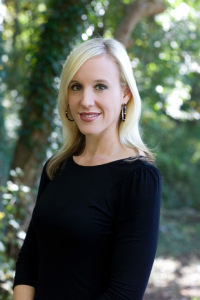 Erika Robuck self-published her first novel, RECEIVE ME FALLING. Her novel, HEMINGWAY’S GIRL (NAL/Penguin), was a Target Emerging Author Pick, a Vero Beach Bestseller, and has sold in two foreign markets to date. CALL ME ZELDA (NAL/Penguin) made the Southern Independent Booksellers Bestseller list, and is a Target Recommended Read. Her forthcoming novel, FALLEN BEAUTY, will be published on March 4, 2014, and she is a contributor to GRAND CENTRAL (June 2014, Berkley/Penguin), a short story anthology set at Grand Central Terminal in New York, following World War II.
Erika Robuck self-published her first novel, RECEIVE ME FALLING. Her novel, HEMINGWAY’S GIRL (NAL/Penguin), was a Target Emerging Author Pick, a Vero Beach Bestseller, and has sold in two foreign markets to date. CALL ME ZELDA (NAL/Penguin) made the Southern Independent Booksellers Bestseller list, and is a Target Recommended Read. Her forthcoming novel, FALLEN BEAUTY, will be published on March 4, 2014, and she is a contributor to GRAND CENTRAL (June 2014, Berkley/Penguin), a short story anthology set at Grand Central Terminal in New York, following World War II.
Erika writes about and reviews historical fiction at her blog, Muse, and is a contributor to fiction blog, Writer Unboxed. She is also a member of the Historical Novel Society, Hemingway Society, and the Edna St. Vincent Millay Society.
www.erikarobuck.com ~ www.erikarobuck.wordpress.com
Twitter: @ErikaRobuck ~ Facebook: https://www.facebook.com/ErikaRobuck


March 3, 2014
Author Nancy Bilyeau Says “Take The Plunge And Be Ready For Anything!”
 By now you know I love interviewing authors—and it’s extra special when those authors are already my friends. Nancy Bilyeau and I are in the same author support group (and that is an accurate discription) called Book Pregnant. Before I knew Nancy I’d never read Tudor fiction — let alone Tudor fiction about a nun. For the post I wrote about Nancy’s first book, THE CROWN (complete with photo!) click here.
By now you know I love interviewing authors—and it’s extra special when those authors are already my friends. Nancy Bilyeau and I are in the same author support group (and that is an accurate discription) called Book Pregnant. Before I knew Nancy I’d never read Tudor fiction — let alone Tudor fiction about a nun. For the post I wrote about Nancy’s first book, THE CROWN (complete with photo!) click here.
When I emailed Nancy her questions, I assured her that WFW readers liked their blog posts with a hearty helping of honesty. Below, Nancy Bilyeau lays it on the line. She’s direct, yet she’s hopeful and encouraging. Who of us aren’t?
Please welcome Nancy Bilyeau to WFW!
Amy xo
Author Nancy Bilyeau Says “Take The Plunge And Be Ready For Anything!”
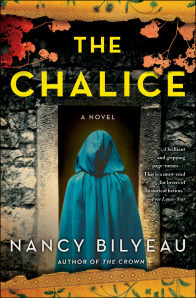 Amy: Book series are very popular in a variety of genres. What is it about a character in general, and Joanna Stafford in particular, that makes her worthy of a series? Don’t you get bored?
Amy: Book series are very popular in a variety of genres. What is it about a character in general, and Joanna Stafford in particular, that makes her worthy of a series? Don’t you get bored? 
Nancy: I am not so sure it’s the character itself that always demands a series but the combination of character and chosen world. I suppose there are exceptions–such as Lee Child’s ex-army MP Jack Reacher or Sue Grafton’s private investigator Kinsey Milhone. Each of those main characters are so fascinating, you’d follow their stories even if they started working the register at 7-11.
But with my novels, I take a character–a half-English, half-Spanish headstrong young aristocrat who wants to be a nun–and I put her in a very specific time and place: England in the 1530s, when Henry VIII was destroying the monasteries of his country. So right away I have that very serious source of conflict running through the books: This is a spiritual person wanting to practice her faith in a time when it was difficult and dangerous to do so. There is always another plot powering one of my novels–a search, a conspiracy, a love, and sometimes all three of those things at once–but the inherent conflict exists.
I’ve had a lot of feedback on Joanna, and most readers like her intelligence and sense of integrity, but also some people feel frustrated when she does something they don’t want her to do. I find that interesting. Everyone says readers hate passive characters, but Joanna is almost too independent for a small percentage of readers.
I never get bored with her. I can’t explain what she is to me. Stephanie Meyer once said that Bella Swan was like her daughter. Joanna is not a daughter to me, or a sister. And she’s not my alter ego. I’d never even met a nun before I started writing her, and I’ve had to do a lot of research to make sure she’s authentic. It’s more like Frankenstein’s Monster, but in a good way. Joanna is attractive  I’ve brought her to life and I feel very protective.
I’ve brought her to life and I feel very protective.
Amy: Shoving aside the changing nature of publishing and the fact that there’s no “sure thing”–what is your plan/vision/hope for your books and the stories featuring Joanna Stafford?
Nancy: I’m finishing the third book in the series now. It’s called “The Covenant.” After that, I’m not sure what I will do. I am totally ready to keep going. Or I could take a break and write a different character in a different time. I was at a brunch and I said I was thinking of doing that and a woman who’s read and liked my books said, looking worried, “But your books will still have religion in them, won’t they? And you won’t leave the Tudor period?” Well, if I wanted to write another book about spirituality in the 1530s and 1540s, I’d keep going with Joanna! I would almost feel as if I were betraying her to write a different person in the same time.
Amy: Would you share with us one thing we don’t know about Joanna? Something that is part of her history or just hasn’t made it into one of the books? Is there something you’d like to discover about her as you continue writing?
Nancy: I don’t think I’ve held anything back about Joanna. I’ve thought about her a great deal and put it all in the books. I would like to keep going with her as she becomes a wife and a mother. I’m not saying that this would necessarily happen–SPOILER ALERT.  But I would love to discover how she copes with that part of life.
But I would love to discover how she copes with that part of life.
Amy: What’s your best advice to an author, whether published or aspiring, who’s considering writing a series?
Nancy: Writing a series is wonderful but it’s also very tricky. As writers, we need to produce a book a year or every two years at the most, to keep the momentum going and that is especially true with a series. But publishers want to “wait and see” with a new series before they commit to buying and scheduling them. They want to know: Is it going to catch fire? In today’s publishing climate, it’s unusual to have a multi-book commitment right away, although they do happen, as with my friend Laura Anderson and her new “Boleyn king” series.
As soon as readers finish a book in a series, they want the next one. But can anyone possibly write a series of books totally on spec and then if the first or second one becomes a hit, they have the next ones written and ready to go? By the way, I hear about authors writing two or three novels a year and I just can’t do that. My books require so much research and intricate plotting and then I revise my writing quite a bit before I submit to my editor. Maybe I need to drink stronger coffee? 
And yet, here’s the problem: if you put out a book and wait and see the response and THEN if it’s positive, you start writing the next one, you’re hopelessly behind in the production cycle.
You are now doubtless waiting to read my solution to this conundrum–and I don’t have one. I would really love to hear what other authors this about this, actually.
But I guess my advice is: Take the plunge–and be ready for anything!
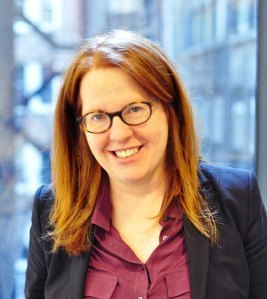 Nancy Bilyeau is a magazine editor who has worked on the staffs of Rolling Stone, Good Housekeeping and InStyle. She is currently the executive editor of DuJour magazine. The Crown and The Chalice have been published in six languages, and The Crown was short-listed for the Crime Writers Association’s Ellis Peters Historical Dagger Award for 2012.
Nancy Bilyeau is a magazine editor who has worked on the staffs of Rolling Stone, Good Housekeeping and InStyle. She is currently the executive editor of DuJour magazine. The Crown and The Chalice have been published in six languages, and The Crown was short-listed for the Crime Writers Association’s Ellis Peters Historical Dagger Award for 2012.
The Chalice comes out in trade paperback March 18, 2014. It’s already for sale in hardcover (3/2013) and ebook. The Crown came out in hardcover and paperback in 2012. The third book is The Covenant–no publication date yet!
My website is www.nancybilyeau.com
My twitter “ID” is https://twitter.com/Tudorscribe
My Facebook author page is https://www.facebook.com/NancyBilyeauAuthor


February 28, 2014
Big Book Giveaway Winners Announced!
Thank you all for helping to make my birthday simply fabulous! Now, some fabulousness for you!
If your name is below–you’ve won a book! Please email your USA mailing address to womensfictionwriters @ gmail . com. Let me know if you’d like the book signed. I’ll send addresses to authors.
CONGRATULATIONS!
Amy xo
Orly Konig Lopez
Diane King
Melissa Cryzter Fry
Carrie Rice
Tasha Seegmiller
Amy M-J
Melissa Miles
Jocosa Wade
Kim Bullock
aishacs
Debra Hearne
Nicole Silberman
Vicki Frakes


February 26, 2014
Author Janie Chang Says To Find A Way To Write Before It’s Too Late
 Today we have with us, Janie Chang, debut author of THREE SOULS. Janie shares with us not only how how she came up with the idea for her novel, but how she actually decided to write it, and the steps she took to become a better writer and then a published author. Janie also touches on the notion that we need to find the time to write, no matter what else we have to make time for. A good reminder, indeed.
Today we have with us, Janie Chang, debut author of THREE SOULS. Janie shares with us not only how how she came up with the idea for her novel, but how she actually decided to write it, and the steps she took to become a better writer and then a published author. Janie also touches on the notion that we need to find the time to write, no matter what else we have to make time for. A good reminder, indeed.
Please welcome Janie Chang to Women’s Fiction Writers!
Amy xo
Author Janie Chang Says To Find A Way To Write Before It’s Too Late
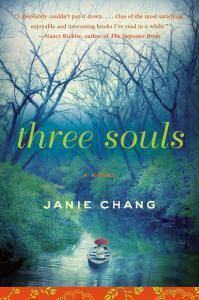 Amy: Hi Janie, welcome to Women’s Fiction Writers. Your debut novel, THREE SOULS, was inspired by stories you’d heard growing up. What was it that specifically sparked the story of Leiyin, the main character?
Amy: Hi Janie, welcome to Women’s Fiction Writers. Your debut novel, THREE SOULS, was inspired by stories you’d heard growing up. What was it that specifically sparked the story of Leiyin, the main character?
Janie: My dad was a great storyteller, and I learned a lot of family history listening to him talk about his childhood, the town in China where he grew up, and our ancestors. When he spoke of his mother, it was always with great love and respect – and a lot of sadness.
My grandmother was born into a very wealthy, very educated family. She wanted to attend university and become a teacher, but her father didn’t allow it. In those days, you never disobeyed your parents. But she did disobey – she tried to run away from home and get to university. But she was caught at the train station and dragged home in disgrace. Her father was furious, and punished her in a way that changed her life and prevented her from ever fulfilling her dreams. She was a woman of intelligence and ambition, but she lived in an era that allowed women very few options.
Her story has haunted me for a long time. I always knew my first novel would draw from that turning point in her life. To me, my grandmother’s fate speaks of the lives of all women forced to submit to the will of fathers, husbands, brothers, and in-laws; not just in pre-revolutionary China but also today, in many countries around the world.
Amy: What was your family’s reaction to your publishing a novel with their history and stories at its core?
Janie: Mostly they’re proud to have a published author in the family. My father passed away in 2000, but he would’ve been pleased. The family has a long literary tradition, lots of scholars, poets, and writers. My brothers and cousins know there are bits of family history in there, but it’s all about previous generations so there aren’t any skeletons in the contemporary closet to worry about.
Amy: From book idea to book shelf, how long was your journey to publication?
Janie: Ten years if you count many, many years of thinking and false starts. I got serious in 2009 after taking a fiction class. People – other students! – were using words like “post-Modernist” and saying things like “How can you tell when it’s better to use third-person limited or third-person omniscient?” and there I sat, completely dumbfounded. There’s more than one kind of third person? I am so, so up the creek! It was pretty obvious I had to learn about the craft of writing a novel or I’d never manage a decent manuscript.
The Writers’ Studio, which is a one-year creative writing program at Simon Fraser University, accelerated my learning curve by about ten years. No exaggeration to say it changed my life. My husband cooked dinner every night so that I could write. By 2012 I had a manuscript that was good enough to attract an agent. By the end of 2012, HarperCollins Canada made a pre-emptive offer for Three Souls. My editors and I went for broke, edited like crazy, and the book was on shelves in August 2013 in Canada. And it’s out this month in the US, from William Morrow Books (HarperCollins US).
Amy: Please tell us about one of your favorite scenes in THE THREE SOULS. (No spoilers, of course!) Did writing this scene come easily to you, or not? And why is it is one of your favorites?
Janie: I’ve always loved the opening, where the main character is a ghost watching her own funeral. She knows it’s her funeral but she can’t remember her life. Her three souls are beside her, and they can’t remember her life either. They hang there, floating in the rafters of a small family temple. It’s my favorite because that scene flashed into my mind suddenly one day, and I knew that was how the novel had to begin. It set the structure of the whole story. So I’m very grateful to that scene.
Amy: What’s your definition of women’s fiction—and how do you feel about that label for books about women?
Janie: ‘Women’s Fiction’ feels like a moving target that slides from light-hearted chick-lit to serious literary, depending on the marketing. As a result it seems to have become a catch-all category for anything with a female protagonist. On days when I feel bitchy, I think ‘And why isn’t there a ‘Men’s Fiction’ label?
I believe the first obligation of a novelist is to tell a good story. What I look and hope for when a book is labeled ‘Women’s Fiction’ is a story where the female protagonist strives toward both personal and larger goals, her actions impacting her own world view as well as the relationships around her. Because I feel that all stories are ultimately about relationships.
Amy: Please share with us your best advice for writers of women’s fiction.
Janie: It isn’t lack of craft or talent that prevents women from writing; it’s the willingness to push their writing to the foreground of their lives. Women seem to put others’ needs ahead of their own. Your spouse, your children, eldercare, the demands of the day job – all these responsibilities get in the way, and one day you wake up to realize you’ve been denying a really important part of who you are. Write. Find a way to write before it’s too late. Give up something less important that uses up time, negotiate with your family for ‘quiet time’ and a space to write. Otherwise you’ll end up resentful, regretful, or both.
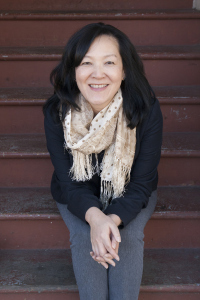 Janie Chang is a Canadian novelist who draws upon family history for her writing. She grew up listening to stories about ancestors who encountered dragons, ghosts, and immortals and about family life in a small Chinese town in the years before the Second World War. She is a graduate of The Writer’s Studio at Simon Fraser University. Three Souls is her first novel.
Janie Chang is a Canadian novelist who draws upon family history for her writing. She grew up listening to stories about ancestors who encountered dragons, ghosts, and immortals and about family life in a small Chinese town in the years before the Second World War. She is a graduate of The Writer’s Studio at Simon Fraser University. Three Souls is her first novel.
Born in Taiwan, Janie has lived in the Philippines, Iran, Thailand, and New Zealand. She now lives in beautiful Vancouver, Canada with her husband and Mischa, a rescue cat who thinks the staff could be doing a better job.
Author website Facebook Twitter


Women's Fiction Writers
- Amy Sue Nathan's profile
- 543 followers


